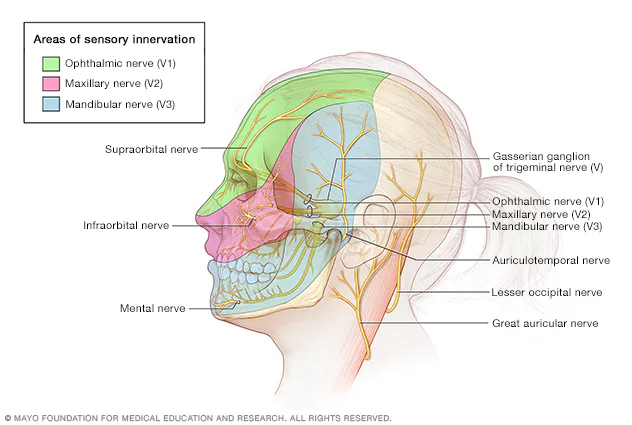- Mountbatten Plan (June 3, 1947): partition accepted
- Indian Independence Act (July 1947): dominion status granted
- Role of Congress, League, British in final negotiations
- Communal violence: Punjab, Bengal massacres
- Gandhi’s peace efforts, Nehru’s tryst with destiny speech
Mountbatten Plan (June 3, 1947): partition accepted
The Mountbatten Plan, announced on June 3, 1947, was a significant proposal for the partition of British India into two independent dominions: India and Pakistan. This plan was put forth by Lord Louis Mountbatten, the last Viceroy of India, in response to escalating demands for independence and growing communal tensions between Hindus and Muslims.
Historical Context
Political Landscape:
- By the 1940s, the Indian National Congress and the All-India Muslim League were the two dominant political entities.
- The Congress advocated for a united India, while the Muslim League, led by Muhammad Ali Jinnah, called for a separate nation for Muslims.
Post-World War II Dynamics:
- Britain faced economic difficulties after World War II, making it challenging to maintain control over India.
- The Quit India Movement (1942) and subsequent events intensified calls for immediate independence.
Growing Communal Tensions:
- Increasing violence between Hindu and Muslim communities raised concerns about maintaining order and governance.
Key Provisions of the Mountbatten Plan
Partition of British India:
- The plan proposed dividing British India into two independent dominions: India (primarily Hindu) and Pakistan (primarily Muslim).
- This division was intended to address the religious and political aspirations of both communities.
Boundary Commission:
- A boundary commission would be established to demarcate borders, particularly in the provinces of Punjab and Bengal.
- The commission’s decisions were to be based on demographic distributions.
Dominion Status:
- Both nations would be granted dominion status, allowing for self-governance while recognizing the British monarch as the ceremonial head of state.
- This included autonomy over internal affairs but under the Commonwealth framework.
Timeline for Transfer of Power:
- The plan stipulated that the transfer of power be completed by August 15, 1947, a swift timeline that reflected urgency.
Constitutional Autonomy:
- Each dominion was empowered to draft its own constitution, laying the groundwork for independent governance.
Minority Protections:
- While the plan acknowledged the need for protections for minorities in both countries, specific measures were not clearly defined, leaving potential for future conflict.
Implementation Challenges
Violence and Displacement:
- The announcement of the partition triggered widespread communal riots and mass migrations, leading to significant loss of life and property.
- Over 15 million people were displaced as communities crossed borders to join their religious majorities.
Political Disputes:
- Disagreements persisted between the Congress and the Muslim League regarding governance and representation, complicating the implementation process.
Logistical Difficulties:
- The rapid timeline left little room for adequate planning, resulting in chaos during the transition.
Consequences and Legacy
Creation of Two Nations:
- On August 15, 1947, India and Pakistan emerged as independent nations, marking the end of British colonial rule.
Long-term Conflict:
- The partition laid the foundation for ongoing tensions and conflicts between India and Pakistan, especially regarding the Kashmir region.
Demographic Shifts:
- The partition resulted in profound demographic changes, with significant impacts on community relations and national identities in both countries.
Historical Reflection:
- The Mountbatten Plan remains a crucial subject of study regarding the complexities of decolonization, nationalism, and the challenges of managing religious diversity.
Indian Independence Act (July 1947): dominion status granted
The Indian Independence Act, enacted on July 5, 1947, by the British Parliament, was a landmark legislation that formalized the end of British rule in India and provided for the establishment of two independent dominions: India and Pakistan. This act was pivotal in the decolonization process, granting both nations significant autonomy while still maintaining a ceremonial connection to the British Commonwealth.
Historical Context
Growing Demand for Independence:
The Indian independence movement gained momentum post-World War II, with various political factions, especially the Indian National Congress and the All-India Muslim League, demanding self-governance.
The British government recognized the untenability of continuing colonial rule amid rising unrest and international pressure for decolonization.
Mountbatten Plan:
Following the Mountbatten Plan announced on June 3, 1947, which proposed partitioning British India into two dominions, the Indian Independence Act provided the legal framework to realize this plan.
Key Provisions of the Indian Independence Act
Establishment of Two Dominions:
- The Act stipulated the creation of two independent dominions: India and Pakistan, effective from August 15, 1947.
- Each dominion was to have full sovereign power to govern itself without interference from the British government.
Dominion Status:
- Both India and Pakistan were granted dominion status, meaning they could legislate, govern, and manage their internal affairs independently.
- They would remain members of the British Commonwealth, recognizing the British monarch as the ceremonial head of state.
Transfer of Power:
- The Act outlined the transfer of power from the British government to the new governments of India and Pakistan.
- It established provisions for the appointment of a Governor-General for each dominion to oversee the transition.
Boundary Demarcation:
- The Act empowered the Boundary Commissions, established earlier under the Mountbatten Plan, to delineate borders between India and Pakistan, particularly in Punjab and Bengal.
Constitutional Framework:
- The Act allowed both dominions to draft their own constitutions, establishing a framework for governance and legislative processes.
- The new governments were expected to address issues related to citizenship, minority rights, and property ownership.
End of British Legislative Authority:
- The Act repealed the Government of India Act 1935 and ended British legislative authority in India.
- It transferred legislative powers to the newly formed assemblies of India and Pakistan.
Provisions for Minorities:
- While the Act acknowledged the need to protect minority rights in both dominions, it did not provide specific measures or guidelines, leaving room for future challenges regarding communal relations.
Implementation and Challenges
Communal Violence and Migration:
- The announcement of the partition led to widespread communal violence, resulting in the deaths of hundreds of thousands and the displacement of millions.
- The migration created significant humanitarian crises, as people fled across borders to join their respective religious majorities.
Political Fragmentation:
- The rapid transition created political instability, with competing interests and factions vying for power in both newly formed nations.
- The lack of a clear consensus on governance structures and minority protections posed challenges to the nascent democracies.
Kashmir Conflict:
- The partition did not resolve territorial disputes, particularly regarding Kashmir, which became a flashpoint for conflict between India and Pakistan.
Consequences and Legacy
Sovereignty and Self-Governance:
- The Indian Independence Act marked the formal end of British colonial rule, granting India and Pakistan full sovereignty and the ability to govern themselves independently.
Long-term Impact on India-Pakistan Relations:
- The partition laid the groundwork for enduring tensions and conflicts between India and Pakistan, particularly over Kashmir, influencing regional geopolitics.
Demographic Shifts and Social Change:
- The mass migrations and communal violence reshaped the demographic landscape of both countries, affecting community relations and national identities.
Historical Significance:
- The Indian Independence Act is considered a critical milestone in the history of decolonization, serving as a model for other nations seeking independence from colonial rule.
Role of Congress, League, British in final negotiations
The final negotiations leading to Indian independence in 1947 involved a complex interplay between three key actors: the Indian National Congress (INC), the All-India Muslim League (AIML), and the British government. Each played a crucial role in shaping the outcome of India’s transition from colonial rule to independence, influenced by their distinct objectives, strategies, and the socio-political context of the time.
Indian National Congress (INC)
Historical Background
- Formation: Established in 1885 as a platform for Indian political aspirations.
- Leadership: Dominated by leaders like Mahatma Gandhi, Jawaharlal Nehru, and Sardar Vallabhbhai Patel, who promoted a vision of a united India.
- Ideology: Initially sought greater autonomy within the British Empire, later demanding full independence, particularly after the impact of World War II.
Objectives in Negotiations
- Complete Independence: The INC aimed for full self-governance and the establishment of a secular, democratic state where all communities could coexist.
- Opposition to Partition: Initially resisted the idea of partition, advocating for a unified India.
Role in Negotiations
- Engagement with the British: The INC engaged in multiple negotiations with British officials, emphasizing constitutional reforms and immediate independence.
- Acceptance of Partition: Under pressure from communal violence and the growing strength of the AIML, the INC ultimately accepted the partition as a pragmatic solution.
- Participation in the Constituent Assembly: Post-partition, the INC played a vital role in drafting the Constitution of India, shaping the nation’s democratic framework.
Challenges Faced
- Internal Divisions: Faced ideological disagreements among its members regarding the approach to communal tensions and the League’s demands.
- Communal Riots: The rising violence between Hindus and Muslims complicated the INC’s strategy for a united front.
All-India Muslim League (AIML)
Historical Background
- Formation: Founded in 1906, initially focused on protecting Muslim interests.
- Leadership: Under Muhammad Ali Jinnah, the League transformed into a powerful political force advocating for Muslim nationalism.
- Ideology: Promoted the Two-Nation Theory, asserting that Hindus and Muslims were distinct nations requiring separate states.
Objectives in Negotiations
- Demand for Pakistan: The League’s primary goal was the establishment of Pakistan as a separate nation for Muslims to ensure their political rights and identity.
- Political Representation: Sought guarantees for Muslim representation in any future government structure.
Role in Negotiations
- Mobilization of Support: The League mobilized mass support through campaigns articulating the need for a separate Muslim homeland.
- Negotiation Strategy: Leveraged communal tensions and threats of violence to strengthen its bargaining position in negotiations with both the British and the Congress.
- Impact of Lahore Resolution: The Lahore Resolution of 1940 crystallized the demand for Pakistan, becoming a focal point in negotiations.
Challenges Faced
- Opposition from Congress: The League faced significant opposition from the INC, which sought to maintain a unified India.
- Communal Violence: The escalating violence impacted the League’s ability to negotiate peacefully, complicating the partition process.
British Government
Historical Background
- Colonial Rule: The British had ruled India since the 18th century, facing increasing pressure for reform and independence, especially post-World War II.
- Strategic Interests: Aimed to withdraw from India while maintaining some influence over the subcontinent.
Objectives in Negotiations
- Orderly Transfer of Power: The British sought a peaceful and orderly transfer of power to avoid chaos and potential civil war.
- Partition as a Solution: Recognized partition as a means to address communal tensions and facilitate the withdrawal process.
Role in Negotiations
- Appointment of Mountbatten: Lord Louis Mountbatten was appointed as Viceroy in March 1947, tasked with overseeing the transition and facilitating dialogue between the INC and the League.
- Facilitation of Talks: The British facilitated negotiations between the INC and the AIML, encouraging discussions on partition and governance.
- Legal Framework: The Indian Independence Act of July 1947 provided the legal basis for the transfer of power, formalizing the partition.
Challenges Faced
- Divergent Opinions: Within the British government, differing views on how to handle Indian independence complicated the negotiation process.
- Logistical Difficulties: The rapid timeline for partition created significant challenges, including inadequate planning for the mass migrations and communal violence that ensued.
Communal violence: Punjab, Bengal massacres
The partition of British India in 1947, which led to the creation of two independent nations—India and Pakistan—was marked by unprecedented communal violence. The violence was particularly acute in the provinces of Punjab and Bengal, where deep-rooted religious tensions erupted into brutal massacres.
Historical Context of Communal Tensions
Legacy of Divide
- Colonial Policies: British colonial rule exacerbated communal divisions through policies that favored certain communities, such as the divide-and-rule strategy, which encouraged competition between Hindus and Muslims.
- Religious Identity: The rise of religious nationalism in the early 20th century, particularly the Two-Nation Theory advocated by the All-India Muslim League, intensified communal identities.
Political Developments
- Demand for Partition: The growing demand for a separate Muslim state by the League, especially after the Lahore Resolution of 1940, created an atmosphere of mistrust and fear among communities.
- World War II Impact: The war weakened British control, leading to increased political mobilization along communal lines and escalating tensions between communities
Punjab: The Epicenter of Violence
Background
- Demographics: Punjab was a mixed region, with a significant population of both Hindus and Muslims. The province was divided into districts with varying religious proportions, creating fertile ground for communal strife.
Outbreak of Violence
- Direct Action Day: On August 16, 1946, the Muslim League declared Direct Action Day to assert its demand for Pakistan, leading to widespread riots in Calcutta and subsequent violence spreading to Punjab.
- Retaliatory Attacks: As violence escalated, retaliatory attacks ensued. Both communities engaged in mass killings, arson, and looting.
Nature of Violence
- Massacres: Estimates suggest that around 200,000 to 300,000 people were killed in Punjab during the violent upheaval. Women and children were particularly vulnerable, facing abductions, rapes, and forced conversions.
- Displacement: Millions were displaced as people fled across the newly drawn borders. An estimated 10 to 15 million people migrated, resulting in one of the largest human displacements in history.
Government Response
- Ineffectiveness of Authorities: The British authorities and local governments struggled to contain the violence. Police forces were often ineffective or complicit in the atrocities.
- Emergency Measures: Although some emergency measures were implemented, they were inadequate to stem the tide of violence.
Bengal: A Complex Landscape of Violence
Background
- Demographics: Bengal was characterized by a complex demographic composition, with significant Hindu and Muslim populations, particularly in urban areas like Calcutta and rural districts.
Outbreak of Violence
- Communal Riots in Calcutta: The violence in Bengal began with the riots in Calcutta following Direct Action Day, quickly spreading to other parts of the province.
- Political Rivalries: The rivalry between the INC and the AIML fueled tensions, with both sides accusing each other of inciting violence.
Nature of Violence
- Brutality: The violence in Bengal was marked by brutal killings, arson, and sexual violence. Estimates indicate that about 100,000 to 200,000 people were killed during the riots.
- Destruction of Property: Many homes, businesses, and places of worship were destroyed, leading to long-lasting socio-economic ramifications.
Government Response
- Inadequate Measures: Similar to Punjab, the British government’s response in Bengal was insufficient. Law enforcement agencies were overwhelmed and often failed to protect vulnerable communities.
- Military Intervention: Eventually, military forces were deployed to restore order, but the damage had already been done, leaving deep scars in the social fabric.
Consequences of Communal Violence
Humanitarian Crisis
- Mass Displacement: The violence resulted in one of the largest refugee crises of the 20th century, with millions fleeing their homes and becoming refugees in the newly established nations.
- Psychological Trauma: The brutality of the violence left lasting psychological scars on survivors, contributing to intercommunal distrust and animosity.
Political Ramifications
- Impact on Governance: The violence complicated the political landscape in both India and Pakistan, affecting governance and community relations in the years that followed.
- Long-term Conflict: The memories of violence became embedded in the collective consciousness of communities, contributing to ongoing tensions and conflicts in the region.
Social Fabric
- Inter-communal Relationships: The violence shattered social ties between communities that had coexisted for centuries, leading to a legacy of suspicion and hostility.
- Cultural Loss: The massacres and displacement resulted in the loss of cultural heritage, as entire communities were uprooted from their historical homelands.
Gandhi’s Peace Efforts and Nehru’s Tryst with Destiny Speech
The period leading up to India’s independence in 1947 was marked by significant efforts towards achieving peace and unity amidst communal tensions and political unrest. Mahatma Gandhi, as a prominent leader of the Indian National Movement, championed non-violence (ahimsa) and sought peaceful solutions to conflicts. Jawaharlal Nehru’s “Tryst with Destiny” speech, delivered on the eve of independence, encapsulated the aspirations of a free India.
Gandhi’s Peace Efforts
Philosophical Foundation
- Ahimsa (Non-Violence): Gandhi’s philosophy of non-violence was rooted in the belief that moral power could overcome physical force. He advocated for peaceful resistance against oppression and injustice.
- Satyagraha: This concept involved non-violent civil disobedience as a means of asserting one’s rights without resorting to violence. Gandhi employed satyagraha as a powerful tool in the Indian independence movement.
Key Movements and Initiatives
Champaran and Kheda Satyagraha (1917-1918):
- Context: These movements addressed the grievances of farmers facing oppressive taxation and exploitation by British landlords.
- Outcome: Gandhi’s interventions led to reforms and concessions from the British, showcasing the effectiveness of non-violent protest.
Non-Cooperation Movement (1920-1922):
- Objective: Aimed to resist British rule through non-cooperation, including boycotting British goods, institutions, and honors.
- Impact: The movement mobilized millions and fostered a sense of national unity, although it was suspended following the violent incident at Chauri Chaura.
Salt March (Dandi March, 1930):
- Significance: A direct action campaign against the British salt tax, where Gandhi marched 240 miles to produce salt from seawater.
- Outcome: The Salt March garnered international attention and highlighted the injustices of colonial rule, reinforcing the principles of non-violence and civil disobedience.
Quit India Movement (1942):
- Call for Immediate Independence: Gandhi launched the Quit India Movement, urging Indians to “do or die” in their quest for freedom.
- Repression and Resilience: Although met with severe repression, the movement demonstrated widespread support for independence and Gandhi’s enduring influence.
Efforts Towards Communal Harmony
- Interfaith Dialogue: Gandhi actively sought to bridge the divide between Hindus and Muslims, emphasizing unity and mutual respect. He organized prayer meetings and campaigns promoting communal harmony.
- Fast for Peace: In response to communal riots during partition, Gandhi undertook fasts to appeal for peace and reconciliation, urging communities to embrace non-violence and coexistence.
Challenges and Criticisms
- Opposition from Extremists: Gandhi faced criticism from radical factions within the Congress and other groups who favored more militant approaches to independence.
- Partition and Violence: Despite his efforts, the communal violence during partition posed a significant challenge, leading to disillusionment among many of his followers
Nehru’s Tryst with Destiny Speech
Context of the Speech
- Date and Occasion: Delivered on August 14, 1947, at the stroke of midnight, marking the transition from British colonial rule to independence.
- Significance: The speech symbolized the aspirations of a newly independent nation and served as a clarion call for unity and progress.
Key Themes of the Speech
Historical Significance:
- “Long years ago we made a tryst with destiny”: Nehru reflected on the long struggle for freedom, acknowledging the sacrifices made by countless individuals in the fight against colonialism.
- Recognition of Past Struggles: He paid tribute to freedom fighters and highlighted the collective journey towards independence.
Vision for the Future:
- Nation Building: Nehru emphasized the need for India to rise as a strong, self-reliant nation, advocating for social justice, equality, and democracy.
- Unity in Diversity: He underscored the importance of embracing India’s diversity, urging citizens to work together regardless of caste, creed, or religion.
Commitment to Progress:
- Economic Development: Nehru called for the modernization of India and the need to address poverty and inequality to ensure a better future for all citizens.
- Scientific Advancement: He recognized the role of science and technology in nation-building, advocating for education and innovation.
Global Responsibility:
- Peace and Cooperation: Nehru articulated India’s commitment to peace and cooperation on the global stage, envisioning a role for India as a leader in promoting international solidarity.
Impact and Legacy
- Inspiration for Generations: Nehru’s speech became a defining moment in India’s history, inspiring future generations to work towards the ideals of freedom, equality, and justice.
- Foundational Document: The speech is often viewed as a foundational document of modern India, encapsulating the hopes and aspirations of a newly independent nation.
MCQ:-
1.Consider the following statements with reference to the Mountbatten Plan (3 June 1947):
- It sought to give dominion status to India and Pakistan.
- It provided for the setting up of a Boundary Commission.
- The plan lacked any provision for conducting referendums to determine regional affiliations.
Answer: 1 and 2 only
Explanation:
- Transfer of power via Dominion status to two independent nations and establishment of the Boundary Commission
- It did include referendums—e.g., in NWFP and Sylhet
2.Which statements regarding the Indian Independence Act are correct?
- It ended British rule in India and declared it a sovereign state.
- It provided for the partition of India and creation of two dominions of India and Pakistan.
Answer: Both 1 and 2
Explanation:
- The Act formally terminated British suzerainty from 15 August 1947, making India sovereign.
- It clearly legislated the partition into two independent dominions under separate governance.
Question:3 Which of the following played the most crucial roles in the final negotiations leading to the partition of India?
(a) The Muslim League
(b) The Indian National Congress
(c) The British Administration
(d) All of the above
Answer Outline:
(d) All of the above. While both the Congress and the Muslim League had conflicting visions, the British political leadership (particularly Attlee and Mountbatten) ultimately engineered the final settlement by merging their demands into a workable solution.
Question.4 “The communal violence in Punjab and Bengal during 1947 significantly influenced the manner and timing of the partition.” Discuss.








